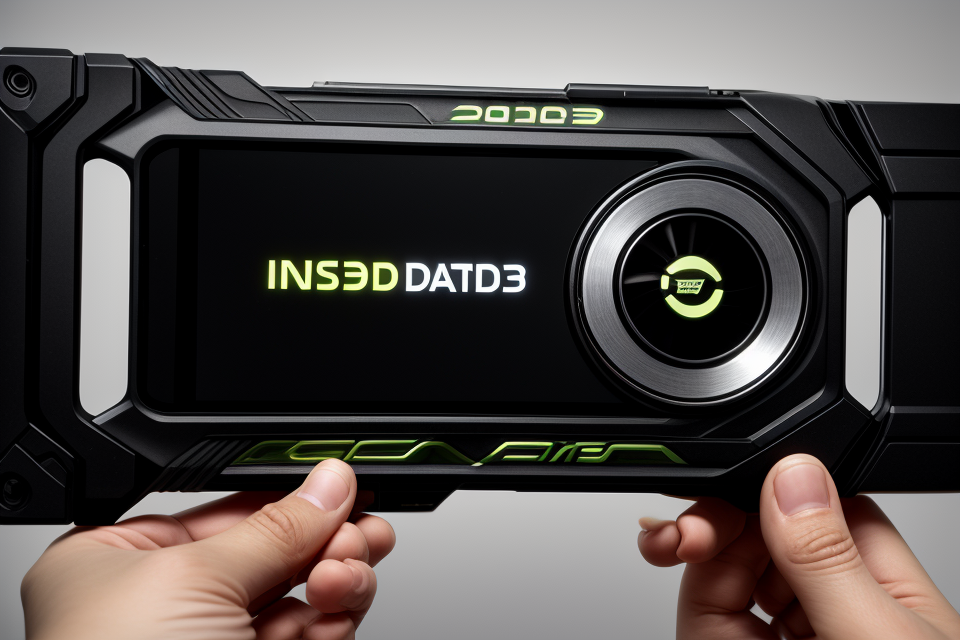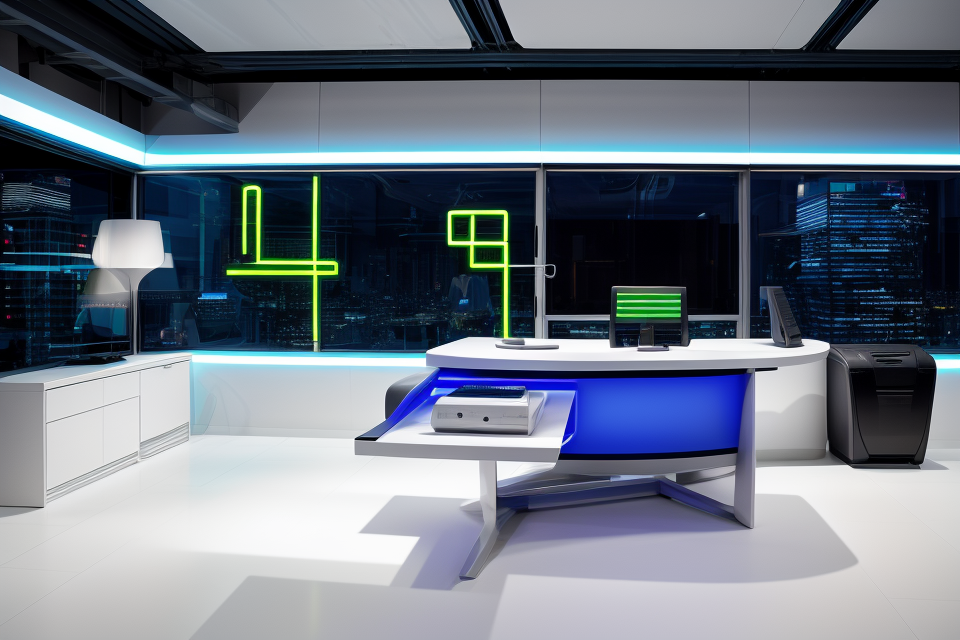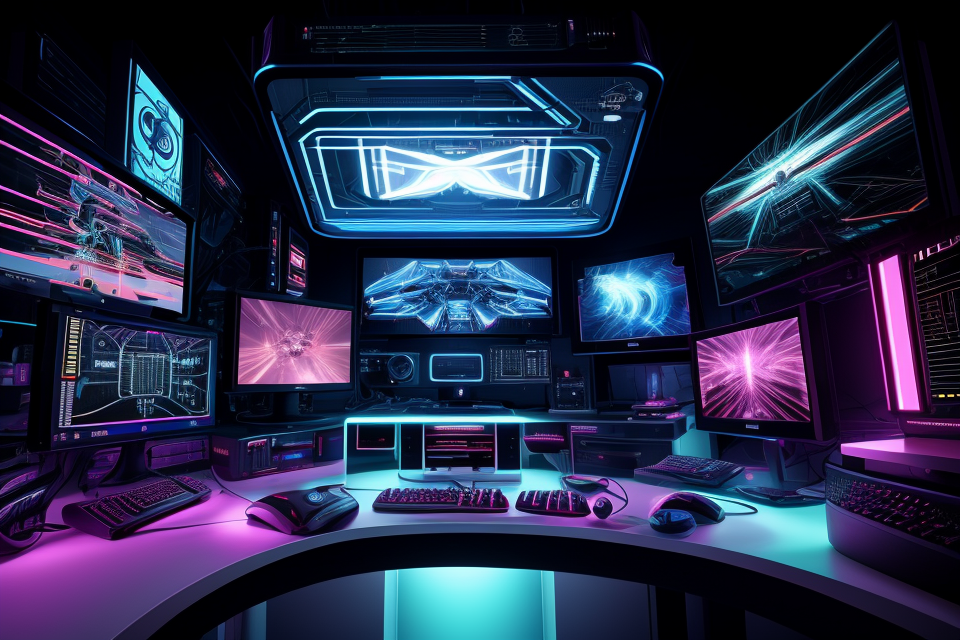
Are you tired of laggy and low-quality graphics in your favorite games? Look no further than Nvidia DLSS! This innovative technology uses artificial intelligence to boost frame rates and enhance visuals, giving you a smoother and more immersive gaming experience. But should you enable it? In this article, we’ll explore the pros and cons of using Nvidia DLSS, and help you decide whether it’s right for you. So, grab a snack, sit back, and let’s dive into the world of enhanced gaming performance!
Whether or not to enable Nvidia DLSS (Deep Learning Super Sampling) for better gaming performance depends on several factors. DLSS is a technology that uses AI to upscale the resolution of a game, allowing for higher frame rates and smoother performance. However, it may not be compatible with all games and may require a certain graphics card to use. Additionally, some gamers may prefer to use traditional methods of increasing resolution, such as supersampling, instead of DLSS. Ultimately, whether or not to enable DLSS will depend on the individual gamer’s preferences and system specifications.
What is Nvidia DLSS?
How does it work?
Nvidia DLSS, or Deep Learning Super Sampling, is a technology developed by Nvidia that aims to improve gaming performance by utilizing artificial intelligence to upscale lower resolution graphics to higher resolutions. This technology is particularly useful for gaming on high-resolution displays, such as 4K, where the processing power required to render graphics at such a high resolution can be significant.
DLSS works by rendering the game at a lower resolution, typically 1080p or 1440p, and then using AI algorithms to upscale the image to the desired resolution. This process is done in real-time, allowing for smooth and seamless gameplay even on high-resolution displays.
By using DLSS, gamers can experience smoother frame rates and improved performance, while still enjoying the benefits of high-resolution graphics. Additionally, DLSS can also reduce the load on the GPU, which can help extend the lifespan of the graphics card and reduce the need for frequent upgrades.
Overall, DLSS is a powerful technology that can significantly enhance gaming performance, particularly for those with high-resolution displays. However, it’s important to note that the specific benefits of DLSS may vary depending on the specific game and hardware being used.
Benefits of using DLSS
Improved performance
Nvidia DLSS (Deep Learning Super Sampling) is a technology that utilizes artificial intelligence to enhance the performance of graphics cards. By using DLSS, the graphics card can perform more efficiently, resulting in better frame rates and smoother gameplay. This technology is particularly beneficial for gamers who have high-end graphics cards but still experience performance issues in certain games.
Reduced input lag
DLSS can also help reduce input lag, which is the delay between a player’s input and the corresponding action on the screen. This can be particularly important in fast-paced games where a split-second delay can make a significant difference. By reducing input lag, DLSS can help improve a player’s reaction time and overall gameplay experience.
Less strain on the GPU
Another benefit of using DLSS is that it can reduce the strain on the graphics card. This is because DLSS allows the graphics card to perform less work overall, as it can offload some of the processing to the CPU. This can help extend the lifespan of the graphics card and reduce the risk of overheating or other issues. Additionally, it can help reduce the power consumption of the graphics card, which can help lower the overall energy usage of the system.
Is DLSS right for you?
Factors to consider
When deciding whether to enable Nvidia DLSS for better gaming performance, it’s important to consider several factors. These include your graphics card, your game, and your display.
Your graphics card
The first factor to consider is your graphics card. DLSS is designed to work with Nvidia graphics cards, so if you have an AMD graphics card, DLSS will not work for you. Additionally, some older Nvidia graphics cards may not be compatible with DLSS. Therefore, it’s important to check if your graphics card is compatible with DLSS before enabling it.
Your game
The second factor to consider is your game. Not all games are compatible with DLSS, so it’s important to check if your game supports DLSS before enabling it. Some games may not have DLSS support, while others may have limited support. Additionally, some games may have specific requirements for DLSS, such as a certain graphics card or display resolution.
Your display
The third factor to consider is your display. DLSS is designed to work with displays that support a certain resolution and refresh rate. Therefore, it’s important to check if your display meets the requirements for DLSS before enabling it. Additionally, some displays may not support DLSS, so it’s important to check if your display is compatible with DLSS before enabling it.
In summary, when deciding whether to enable Nvidia DLSS for better gaming performance, it’s important to consider several factors, including your graphics card, your game, and your display. It’s important to check if your graphics card is compatible with DLSS, if your game supports DLSS, and if your display meets the requirements for DLSS before enabling it.
How to enable DLSS
Finding the setting in your game
Once you have determined that your system is compatible with DLSS, the next step is to locate the setting in your game. The process for finding the DLSS setting varies depending on the game, but it is typically located in the graphics or display settings menu.
For example, in popular games like “Fortnite” and “Call of Duty: Warzone,” the DLSS setting can be found under the graphics or display options. In other games, it may be necessary to search for the setting in the game’s configuration files or through third-party tools.
Adjusting the resolution
Once you have located the DLSS setting, the next step is to adjust the resolution. DLSS allows you to play games at a higher resolution than your monitor’s native resolution, which can improve image quality and provide a sharper picture.
To adjust the resolution, you will need to select the desired resolution from the list of options provided. Keep in mind that the available resolution options will depend on your system’s hardware and the game you are playing.
Monitoring performance
After enabling DLSS and adjusting the resolution, it is important to monitor your system’s performance to ensure that the setting is providing the desired benefits. You can use tools like frame rate counters and benchmarks to measure your system’s performance before and after enabling DLSS.
Additionally, you should pay attention to any changes in image quality or visual artifacts, such as stuttering or tearing. If you notice any issues, you may need to adjust the DLSS setting or try a different resolution to achieve the best balance of performance and image quality.
The verdict: Is DLSS worth it?
Balancing performance and image quality
When it comes to determining whether or not to enable Nvidia DLSS for better gaming performance, it’s important to consider the trade-offs between performance and image quality. While DLSS can improve frame rates and smooth out gameplay, it may also reduce the overall image quality in certain situations.
Here are some key factors to consider when balancing performance and image quality with DLSS:
- Adaptive Sharpening: This feature can help improve image quality when using DLSS by dynamically sharpening the image in real-time. It’s particularly useful for games that rely heavily on motion, such as first-person shooters or racing games. However, it can also impact performance, so it’s important to find the right balance that works for your specific game and system.
- Image Quality Presets: Most games that support DLSS also offer image quality presets that allow you to customize the trade-off between performance and image quality. For example, you may have the option to prioritize higher frame rates at the expense of some image artifacts, or you may be able to prioritize image quality at the cost of lower frame rates. It’s important to experiment with these settings to find the optimal balance for your specific game and system.
- Resolution and Display Settings: The resolution and display settings of your monitor can also impact the trade-off between performance and image quality with DLSS. For example, if you’re using a high-resolution monitor, you may need to prioritize performance over image quality in order to maintain high frame rates. On the other hand, if you’re using a lower-resolution monitor, you may be able to prioritize image quality more heavily without sacrificing too much performance.
Overall, the key to balancing performance and image quality with DLSS is to experiment with different settings and find the optimal balance for your specific game and system. By carefully tweaking these settings, you can get the best of both worlds: smooth, high-performance gameplay and great image quality.
FAQs
1. What is Nvidia DLSS?
Nvidia DLSS, or Deep Learning Super Sampling, is a technology developed by Nvidia that uses AI to improve the performance of games on compatible Nvidia graphics cards. DLSS can increase frame rates and reduce input lag, providing a smoother gaming experience.
2. How does Nvidia DLSS work?
DLSS works by using a neural network to upscale the resolution of the game to a higher resolution than the monitor’s native resolution. This is done on the graphics card, before the image is sent to the monitor, which reduces the workload on the CPU and can result in higher frame rates. DLSS also uses AI to optimize the image quality and reduce input lag.
3. Is Nvidia DLSS supported by all games?
No, not all games are compatible with DLSS. The technology is only supported by a select number of games, and support must be explicitly implemented by the game’s developers. You can check the Nvidia website for a list of supported games.
4. How do I enable Nvidia DLSS?
Enabling DLSS is relatively easy. First, make sure you have a compatible Nvidia graphics card and a monitor with a higher resolution than your game’s native resolution. Then, launch the game and enable DLSS in the game’s graphics settings. The specific steps may vary depending on the game, but most games will have an option for DLSS under the graphics or display settings.
5. Will enabling Nvidia DLSS improve my gaming performance?
Enabling DLSS can improve gaming performance in many cases, particularly for games that are not optimized for your monitor’s native resolution. However, the extent of the improvement will depend on your specific hardware and the game you are playing. It’s always a good idea to try DLSS and see if it makes a noticeable difference in your gaming experience.


